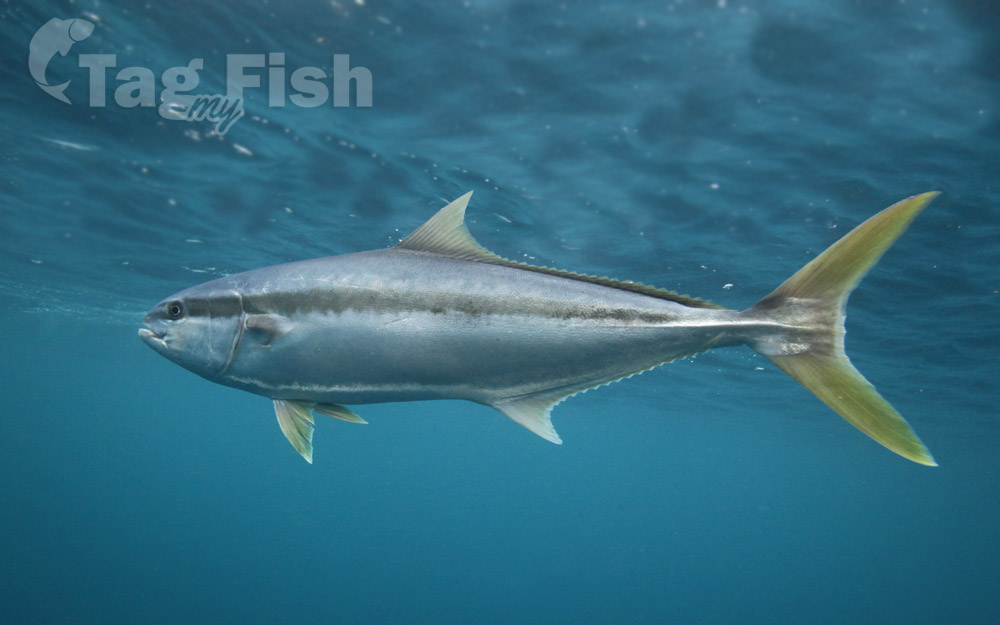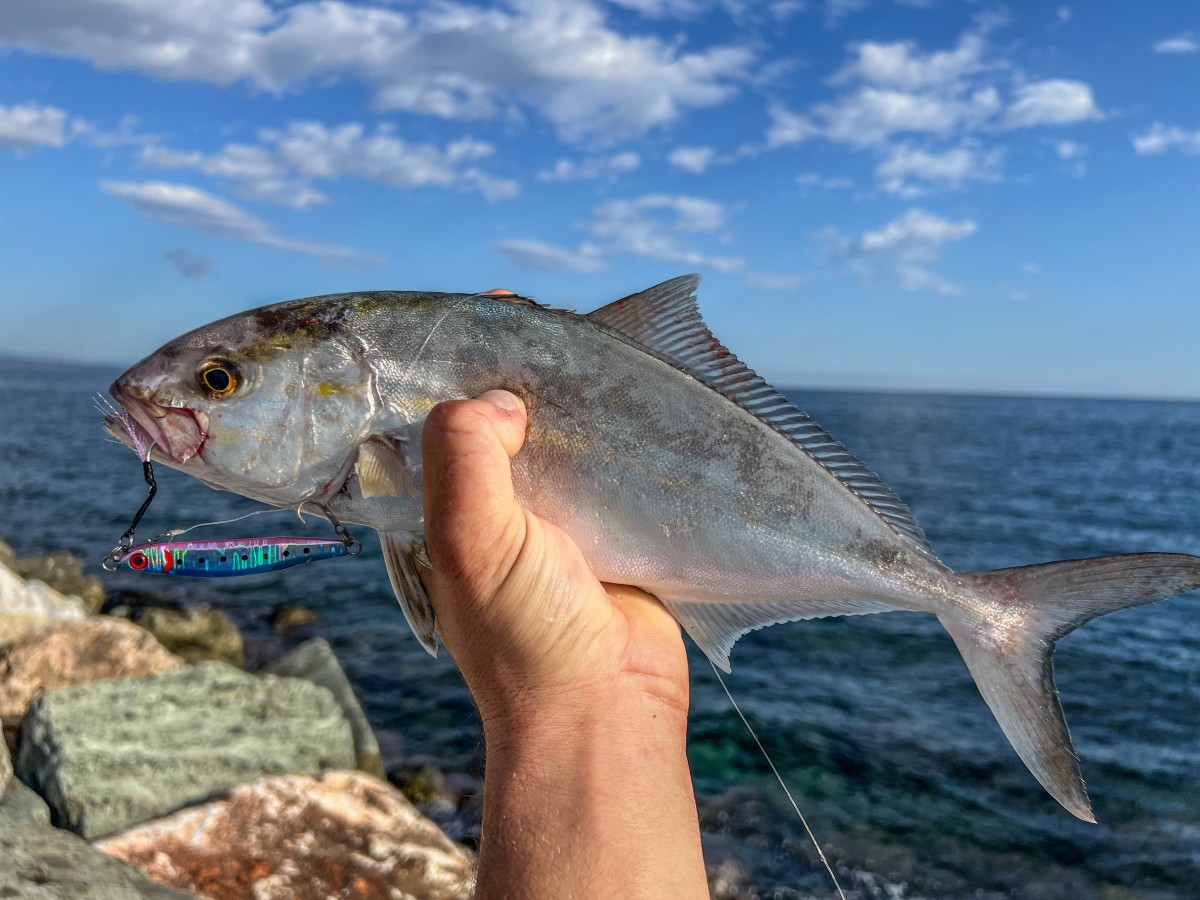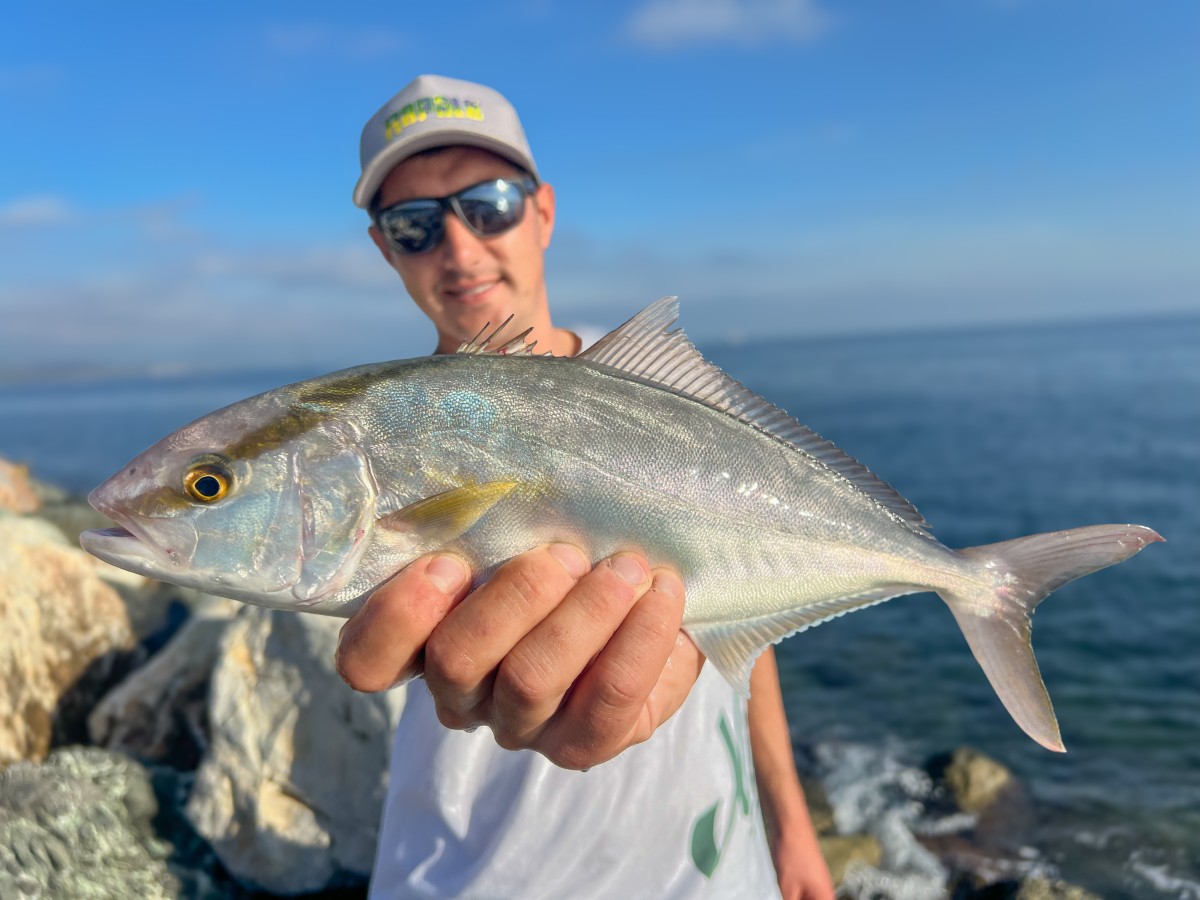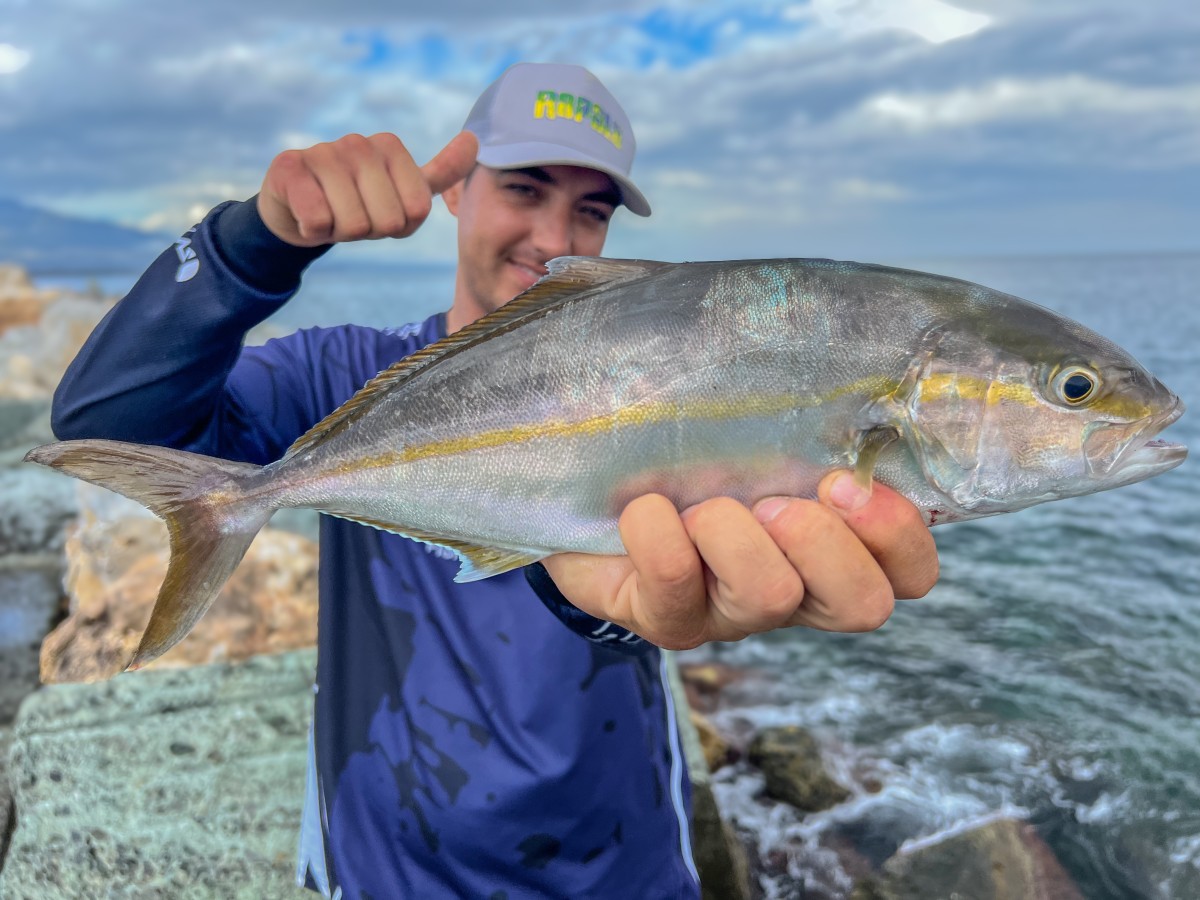Yellowtail amberjack
(Seriola lalandi)

Classification
General data
The yellowtail amberjack, yellowtail kingfish, hiramasa or great amberjack (Seriola lalandi) is a large fish found in the Southern Ocean. Although previously thought to be found in all oceans and seas, recent genetic analysis restricts S. lalandi proper to the Southern Hemisphere waters. However, they are found in Northern Hemisphere waters during certain times of the year. The fish was given its name by Monsieur de Lalande, a naturalist who first informed zoologist Achille Valenciennes of the existence of this species. His reason for the use of the word Seriola (feminine diminutive form of seria, a large earthenware pot) to name the fish is uncertain, but the second word lalandi was derived from his surname.
Distribution and habitat
The yellowtail amberjack occurs in tropical and temperate waters of the Southern Hemisphere and the northern Pacific. In Australia, it is recorded from North Reef, Queensland, to Trigg Island, Western Australia, and as far south as Tasmania.
The yellowtail amberjack (or yellowtail kingfish as it is known in Australia) is a highly mobile pelagic species and tends to either form single-species schools, or combine with southern bluefin tuna (Thunnus maccoyii) and silver trevally (Pseudocaranx dentex). They prefer water temperatures of 17‒24 °C.
In general, they inhabit rocky reefs and adjacent sandy areas in coastal waters and occasionally enter estuaries. They are found from shallow water down to depths around 50 m, although have been caught from over 300 m.
Young fish up to 7 kg are known to form shoals of several hundred fish. They are generally found close to the coast, while larger fish are more common around deep reefs and offshore islands. Juvenile yellowtail amberjack are rarely seen, as they are often found far from land associated with floating debris or weed which provide camouflage. Juveniles are yellow with black bands. This colouration fades as the fish ages, and by about 30 cm in length, the fish has assumed its adult colouration.
Biology
Very little is known of the yellowtail amberjack’s biology, including its habitat preferences throughout juvenile life stages, migration patterns, and wild reproductive behaviour. Adults live around rocky reefs, rocky outcrops, and drop-offs in coastal waters, and around pinnacles and offshore islands.
Maximum length is often reported to reach up to 180 cm. Large kingfish caught near Port Augusta in South Australia have been recorded at weights of between 40 and 50 kilograms.
Recreational fishers have reported that kingfish catches near Port Augusta were more reliable when the Playford Power Stations were discharging hot water into the upper Spencer Gulf. The power stations have been decommissioned, but kingfish still migrate to the upper Spencer Gulf as the southern gulf water cools.














